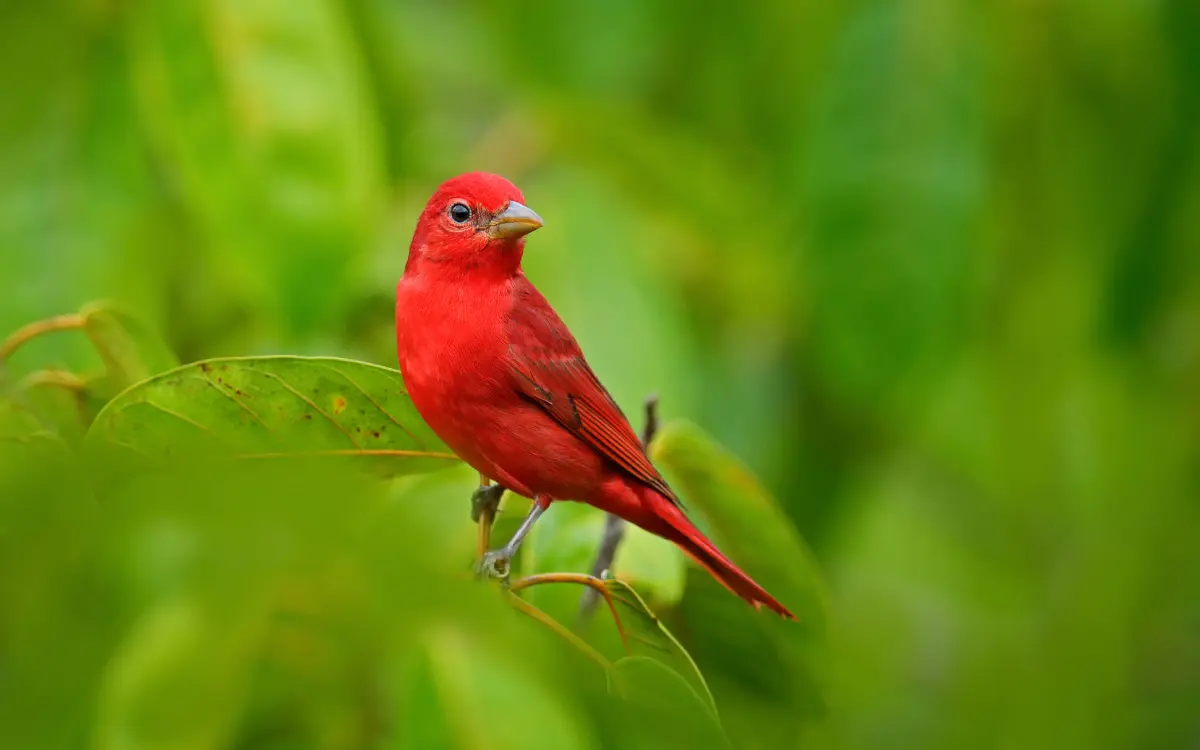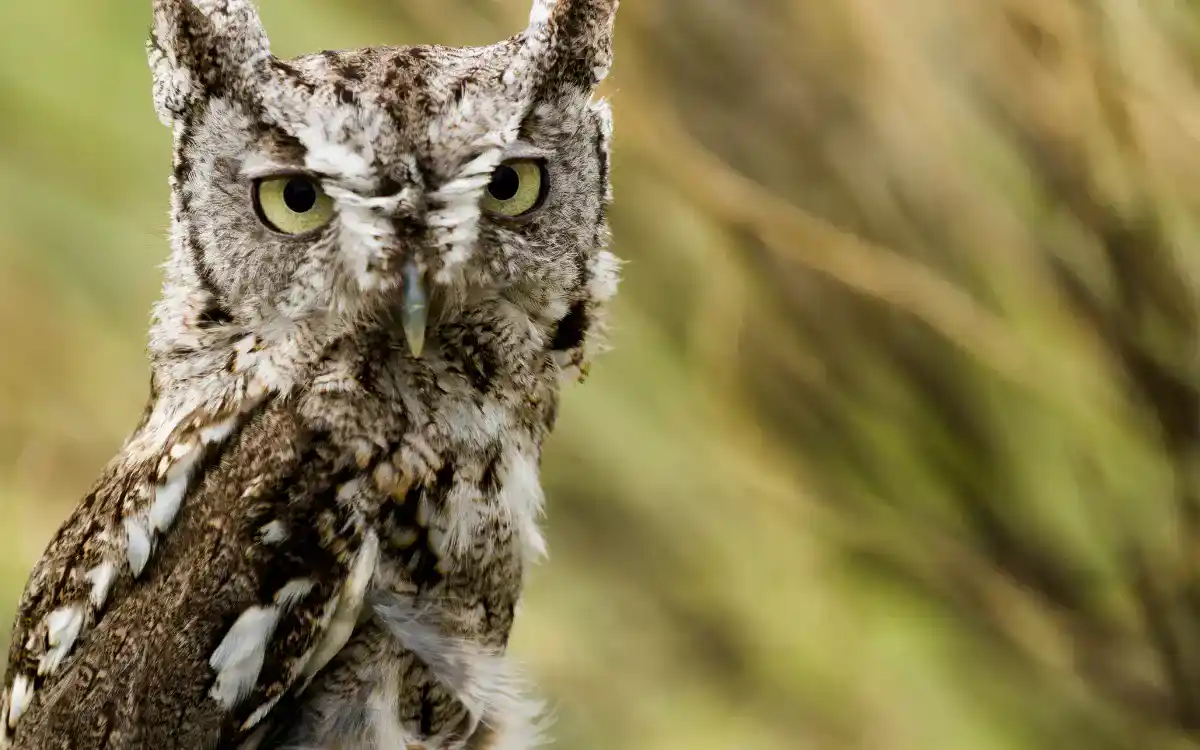15 Largest birds in Wyoming with Bold Look
Welcome to the amazing world of Wyoming’s biggest birds! Come with us to explore the largest birds in Wyoming, from tall cranes to high-flying eagles and huge pelicans. We will see some of the biggest birds.
15 Largest birds in Wyoming with Photo and info
1. Bald Eagle – Haliaeetus leucocephalus
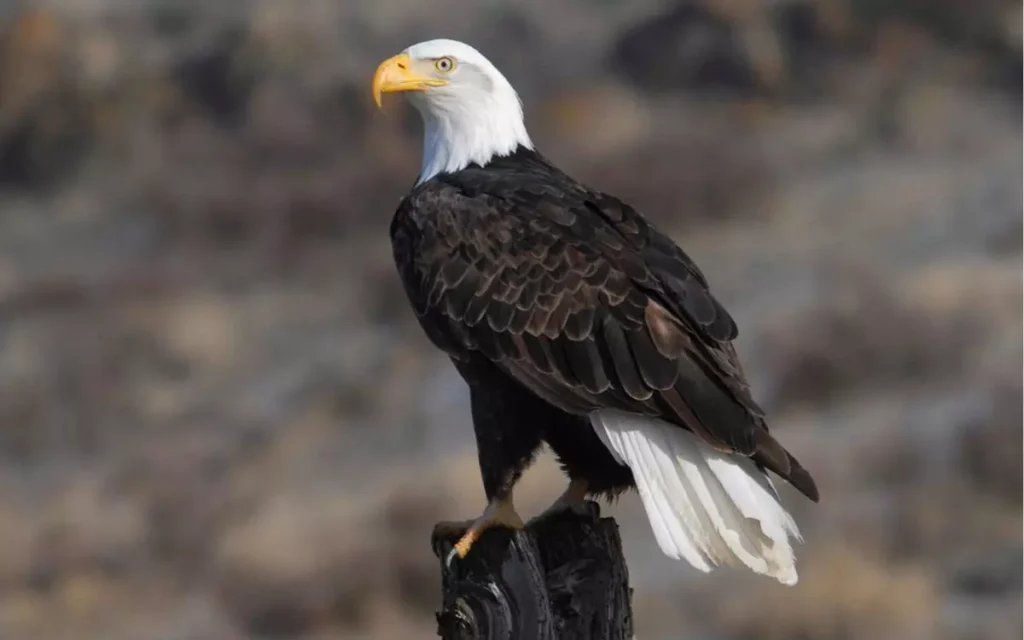
- Kingdom: Animalia
- Class: Aves
- Order: Accipitriformes
- Family: Accipitridae
- Genus: Haliaeetus
- Species: Haliaeetus leucocephalus
The Bald Eagle is a powerful bird with a white head, brown body, and a massive yellow beak. This bird is not only the national symbol of the United States but also a protected species, which means it’s illegal to harm them. Eagles build large nests, often in tall trees or on cliff edges. Their diet mainly consists of fish, which they skillfully snatch from water with their sharp talons.
Fun fact: Despite their fierce look, bald eagles are known for their spectacular aerial courtship displays, involving high-speed dives and talon-locking!
- Length: 27.9-37.8 in (71-96 cm)
- Weight: 105.8-222.2 oz (3000-6300 g)
- Wingspan: 80.3 in (204 cm)
2.Canada Goose – Branta canadensis

- Kingdom: Animalia
- Class: Aves
- Order: Anseriformes
- Family: Anatidae
- Genus: Branta
- Species: Branta canadensis
The Canada Goose is known for its distinctive black head and neck, with white patches on its cheeks, and a brownish body. These geese are common and widespread, thriving across North America. They usually build their nests on the ground near water, using nearby vegetation. Their diet primarily consists of grass, seeds, and small aquatic creatures.
Fun fact: Canadian geese can be very vocal, especially during flight, and are famous for their honking sounds.
- Length: 29.9-43.3 in (76-110 cm)
- Weight: 105.8-317.5 oz (3000-9000 g)
- Wingspan: 50.0-66.9 in (127-170 cm)
3.Great Blue Heron – Ardea herodias
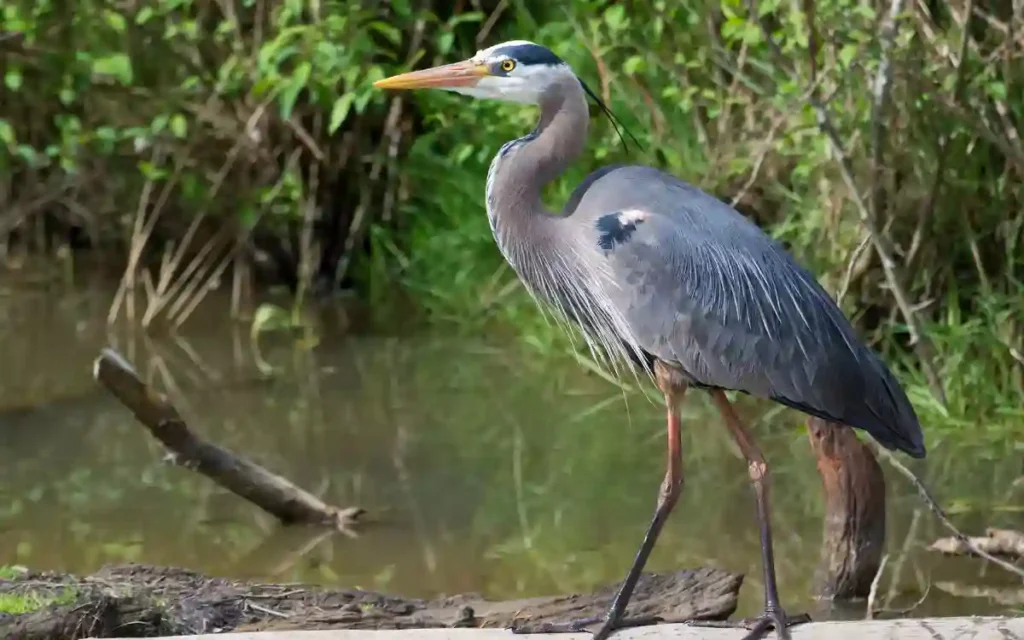
- Kingdom: Animalia
- Class: Aves
- Order: Pelecaniformes
- Family: Ardeidae
- Genus: Ardea
- Species: Ardea herodias
The Great Blue Heron stands tall with a grayish-blue body, long legs, and a sharp pointed beak. It is a common bird found near waters across North America. Herons build their nests high in trees or on bushes near water. They eat mostly fish but will also snatch insects and small mammals.
Fun fact: Despite their large size, Great Blue Herons can fly gracefully, thanks to their wide wingspan which helps them soar with minimal effort.
- Length: 38.2-53.9 in (97-137 cm)
- Weight: 74.1-88.2 oz (2100-2500 g)
- Wingspan: 65.8-79.1 in (167-201 cm)
4.Sandhill Crane – Antigone canadensis

- Kingdom: Animalia
- Class: Aves
- Order: Gruiformes
- Family: Gruidae
- Genus: Antigone
- Species: Antigone canadensis
The Sandhill Crane is notable for its tall, gray body, long legs, and red forehead. This bird is not endangered and can be seen in large flocks in open fields and wetlands. They make their nests on the ground in shallow water, using plants and mud. Their diet consists of plants, insects, and small animals.
Fun fact: Sandhill Cranes are known for their loud, rattling calls and their elaborate dancing displays, which include jumping, bowing, and wing flapping, especially during mating season.
- Length: 47.2 in (120 cm)
- Weight: 119.9-172.8 oz (3400-4900 g)
- Wingspan: 78.7 in (200 cm)
5. Trumpeter Swan – Cygnus buccinator

- Kingdom: Animalia
- Class: Aves
- Order: Anseriformes
- Family: Anatidae
- Genus: Cygnus
- Species: Cygnus buccinator
The Trumpeter Swan is the largest North American swan, featuring a pure white body with a long neck and black beak. These majestic birds are recovering from near extinction thanks to conservation efforts. They build their nests near water bodies using large piles of vegetation. Their diet mainly consists of aquatic plants, but they also eat small fish and insects.
Fun fact: Despite their large size, Trumpeter Swans are known for their powerful, trumpet-like calls, which can be heard over long distances, echoing across their watery habitats.
- Length: 54.3-62.2 in (138-158 cm)
- Weight: 271.6-448.0 oz (7700-12700 g)
- Wingspan: 79.9 in (203 cm)
6. Tundra Swan – Cygnus columbianus
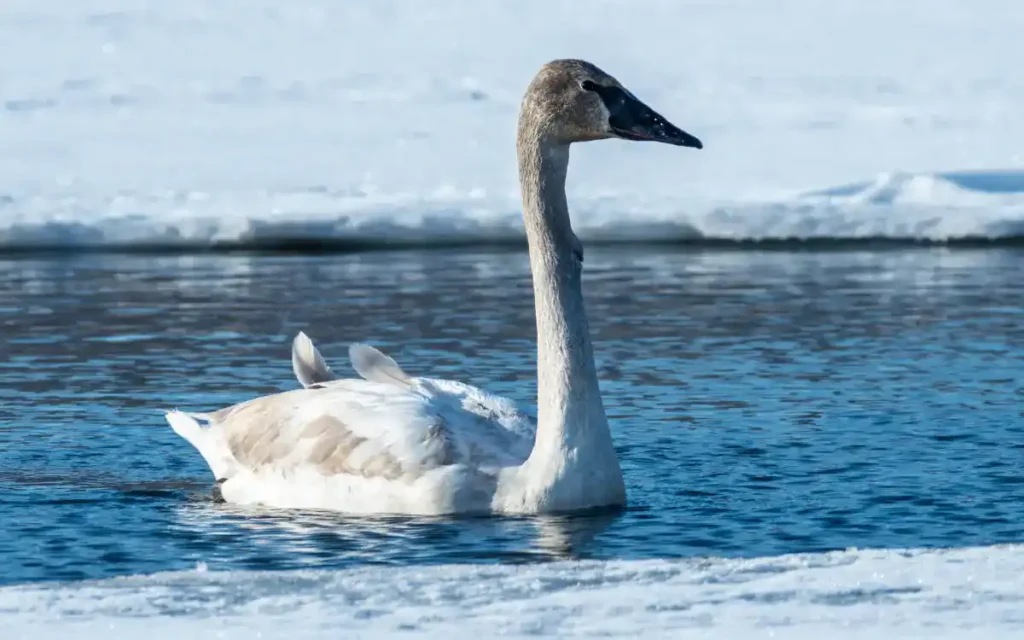
- Kingdom: Animalia
- Class: Aves
- Order: Anseriformes
- Family: Anatidae
- Genus: Cygnus
- Species: Cygnus columbianus
The Tundra Swan is a graceful bird, mostly white with a black beak that usually has a small yellow spot near the eye. These swans are abundant and migrate between the Arctic tundra and the U.S. during winter. They build their nests on the ground in remote Arctic areas. Their diet consists mainly of water plants, but they also eat small aquatic animals.
Fun fact: Tundra Swans are known for their long, whistling calls that are especially memorable during their large, coordinated migration flights.
- Length: 47.2-57.9 in (120-147 cm)
- Weight: 134.0-370.4 oz (3800-10500 g)
- Wingspan: 66.1 in (168 cm)
7. Double-crested Cormorant – Phalacrocorax auritus
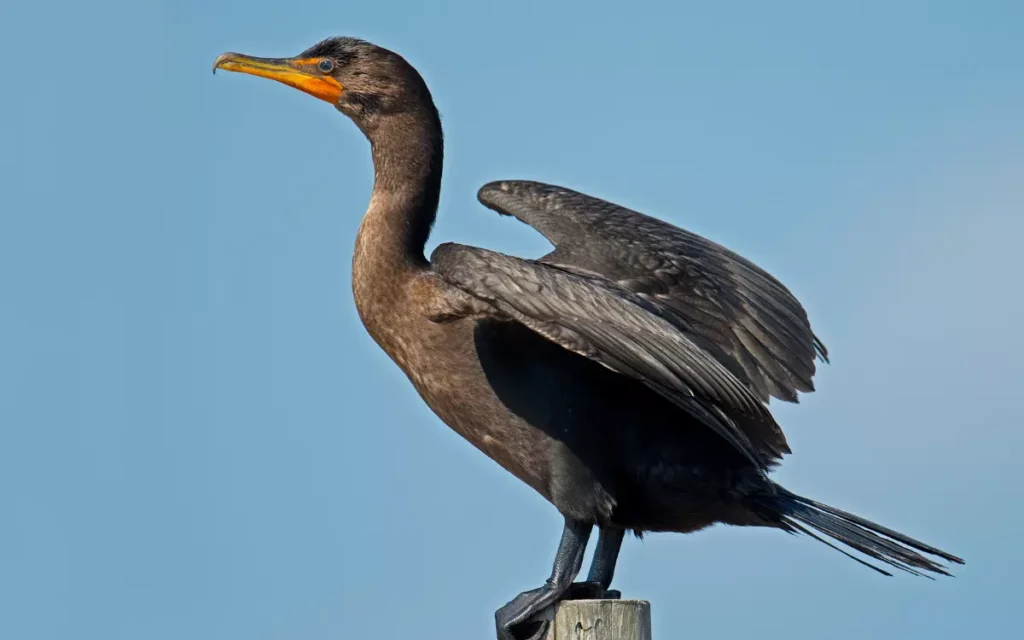
- Kingdom: Animalia
- Class: Aves
- Order: Suliformes
- Family: Phalacrocoracidae
- Genus: Nannopterum
The Double-crested Cormorant is distinctive with its dark body, yellow-orange throat patch, and greenish-black feathers. It is a common bird found near rivers, lakes, and coasts. These birds build their nests in colonies on cliffs or in trees near water. They are excellent divers and primarily eat fish, which they catch by diving underwater.
Fun fact: Double-crested Cormorants can often be seen standing with their wings outstretched to dry after diving, as their feathers aren’t completely waterproof, which helps them dive deeper.
- Length: 27.6-35.4 in (70-90 cm)
- Weight: 2.6-5.5 lb (1.2-2.5 kg)
- Wingspan: 44.9-48.4 in (114-123 cm)
8.Great Gray Owl – Strix nebulosa
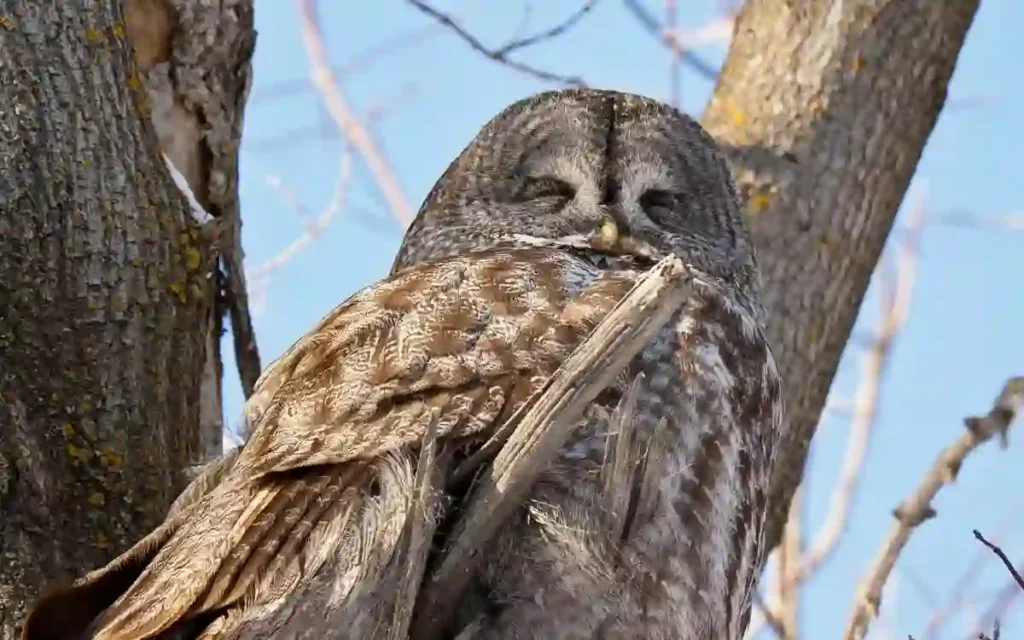
- Kingdom: Animalia
- Class: Aves
- Order: Strigiformes
- Family: Strigidae
- Genus: Strix
- Species: Strix nebulosa
The Great Gray Owl is known for its large size and striking appearance with a dusky gray face, highlighted by concentric circles, and yellow eyes. It is not commonly seen due to its elusive nature and preference for dense boreal forests. These owls nest in broken tree tops or old nests of other large birds. Their diet primarily consists of small rodents, which they catch by plunging into the snow.
Fun fact: The Great Gray Owl has incredible hearing; it can hear prey moving underneath the snow from up to 100 feet away!
- Length: 24.0-33.0 in (61-84 cm)
- Weight: Males: 2.0 lb (890 g), Females: 2.8 lb (1267 g)
- Wingspan: 53.9-60.2 in (137-153 cm)
9.American White Pelican – Pelecanus erythrorhynchos
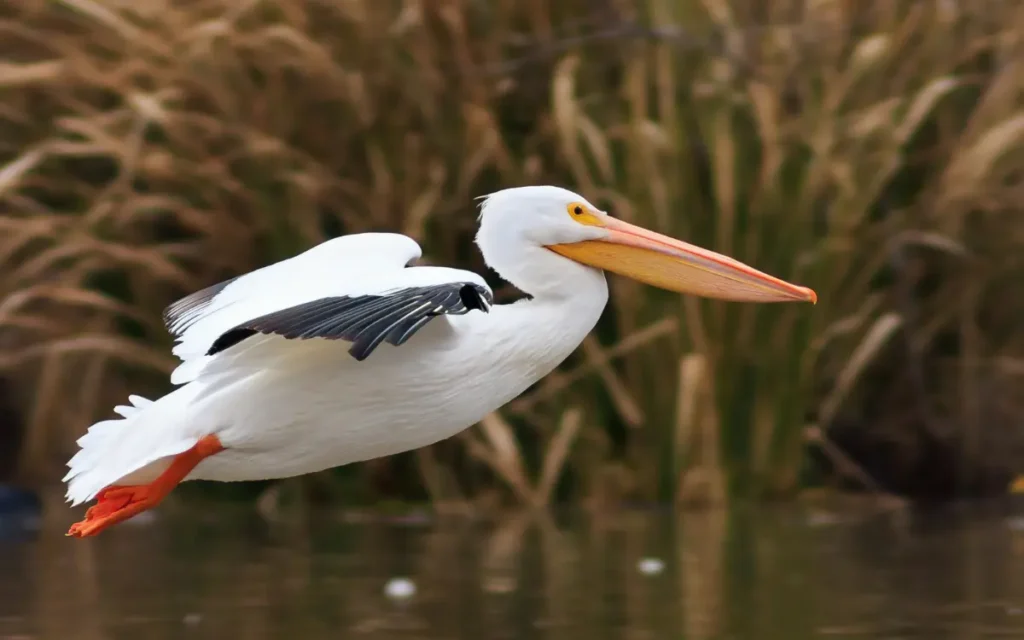
- Kingdom: Animalia
- Class: Aves
- Order: Pelecaniformes
- Family: Pelecanidae
- Genus: Pelecanus
- Species: Pelecanus erythrorhynchos
The American White Pelican is impressive with its large, white body and contrasting black wing tips. It has a huge, distinctive orange bill which is very striking. These pelicans are common during migration seasons and are often seen in large flocks on lakes and coastlines. They nest on the ground in colonies on isolated islands. Their diet mainly includes fish, which they catch by scooping up in their large bills while swimming.
Fun fact: Unlike brown pelicans that dive for fish, American White Pelicans work together in groups to herd fish into shallow waters to make catching easier!
- Length: 50.0-65.0 in (127-165 cm)
- Weight: 158.7-317.5 oz (4500-9000 g)
- Wingspan: 96.1-114.2 in (244-290 cm)
10. Ferruginous Hawk – Buteo regalis
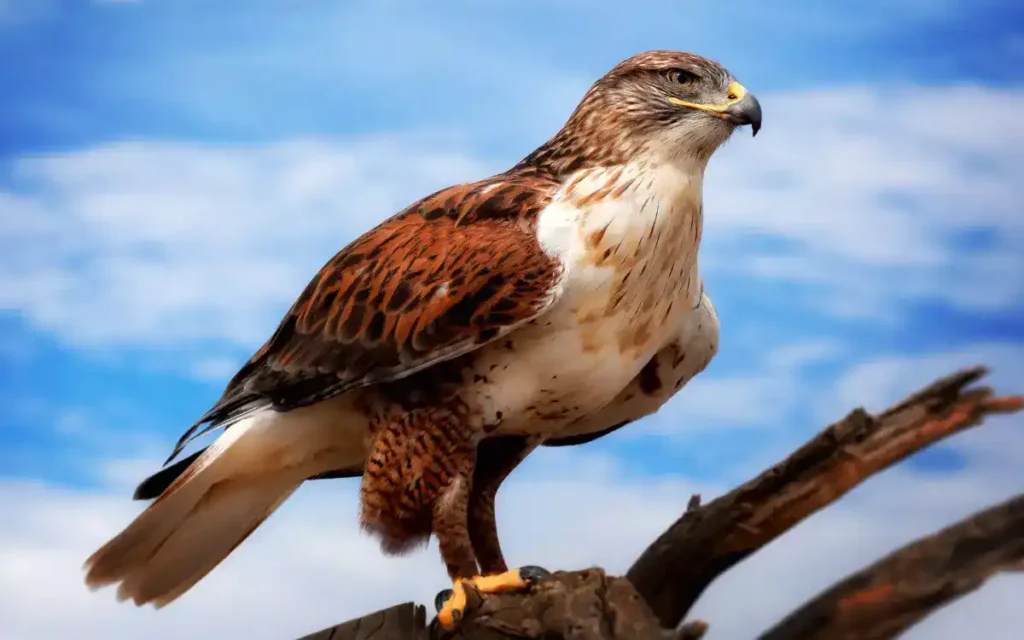
- Kingdom: Animalia
- Class: Aves
- Order: Accipitriformes
- Family: Accipitridae
- Genus: Buteo
- Species: Buteo regalis
The Ferruginous Hawk is the largest hawk in North America, distinguished by its rust-colored back and white underparts. This species is not very common, thriving in open plains. They build their nests both on the ground and in trees and mainly prey on small mammals, such as rodents.
Fun fact: The Ferruginous Hawk’s name comes from “ferrugo,” a Latin term meaning iron rust, referring to its unique reddish-brown color.
- Length: 19.7-27.2 in (50-69 cm)
- Weight: 34.5-73.2 oz (977-2074 g)
- Wingspan: 52.4-60.2 in (133-152 cm)
11.Golden Eagle – Aquila chrysaetos

- Kingdom: Animalia
- Class: Aves
- Order: Accipitriformes
- Family: Accipitridae
- Genus: Aquila
- Species: Aquila chrysaetos
The Golden Eagle is majestic, with a dark brown body and golden feathers on its head and neck. This eagle is widespread but uncommon, favoring open and mountainous regions. They build large nests on cliffs or in high trees. Their diet primarily consists of rabbits, marmots, and ground squirrels.
Fun fact: Golden Eagles are among the fastest birds, capable of diving at speeds up to 200 miles per hour when hunting prey.
- Length: 27.6-33.1 in (70-84 cm)
- Weight: 105.8-216.1 oz (3000-6125 g)
- Wingspan: 72.8-86.6 in (185-220 cm)
12.Gyrfalcon – Falco rusticolus
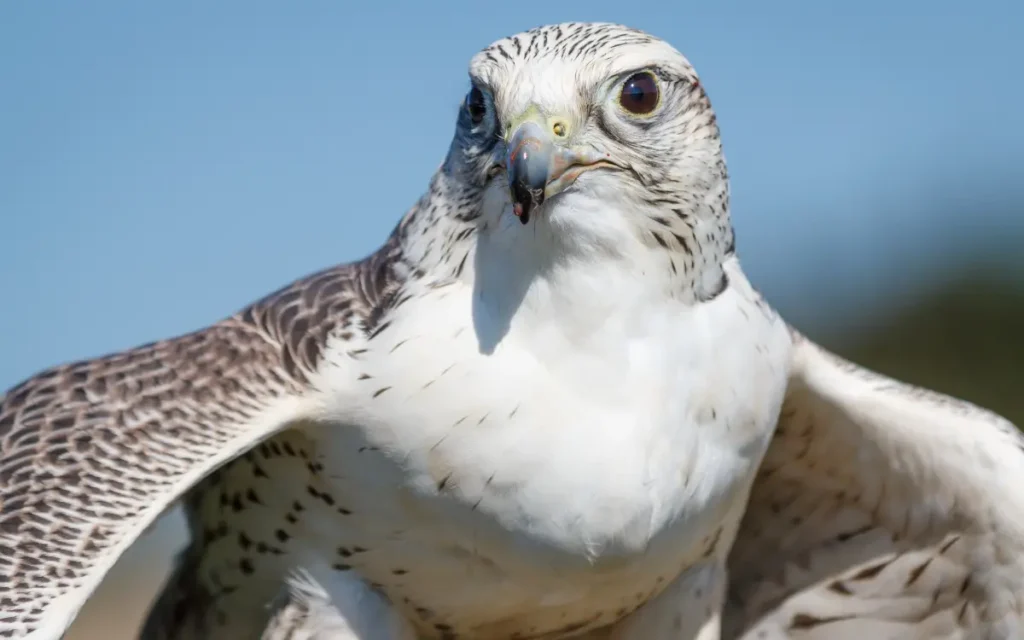
- Kingdom: Animalia
- Class: Aves
- Order: Falconiformes
- Family: Falconidae
- Genus: Falco
- Species: Falco rusticolus
The Gyrfalcon is the largest of the falcon species, showcasing a range of colors from dark gray to nearly white. It is rare and prized by falconers. These birds prefer arctic regions and make their nests on cliff ledges. They mainly feed on birds and small mammals, demonstrating remarkable hunting skills.
Fun fact: The Gyrfalcon can maintain very high speeds over long distances, unlike other falcons that dive for their prey, making it a formidable hunter in the wild.
- Length: 18.9-25.6 in (48-65 cm)
- Weight: 28.2-73.2 oz (800-2074 g)
- Wingspan: 43.3-63 in (110-160 cm)
13. Whooping Crane – Grus americana
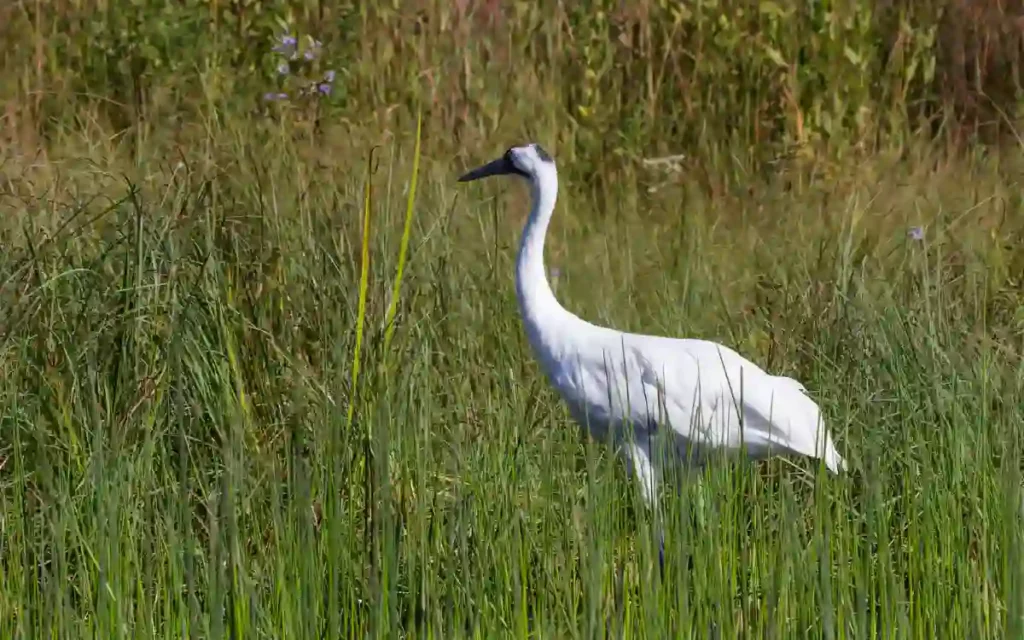
- Kingdom: Animalia
- Class: Aves
- Order: Gruiformes
- Family: Gruidae
- Genus: Grus
- Species: Grus americana
The Whooping Crane is striking with its tall, white body and a red crown. It is one of North America’s most endangered birds, with conservation efforts helping to slowly increase their numbers. These cranes nest in wetland areas, often on raised platforms to protect their eggs. Their diet consists mainly of crustaceans, fish, and marsh plants.
Fun fact: Whooping Cranes have a loud and distinctive call that can carry over several kilometers, crucial for communication over their large, marshy habitats.
- Length: 59.1 in (150 cm)
- Weight: Males: 16 lb (7.3 kg), Females: 14 lb (6.2 kg)
- Wingspan: 90.2-96.1 in (229-244 cm)
14.Snowy Owl – Bubo scandiacus
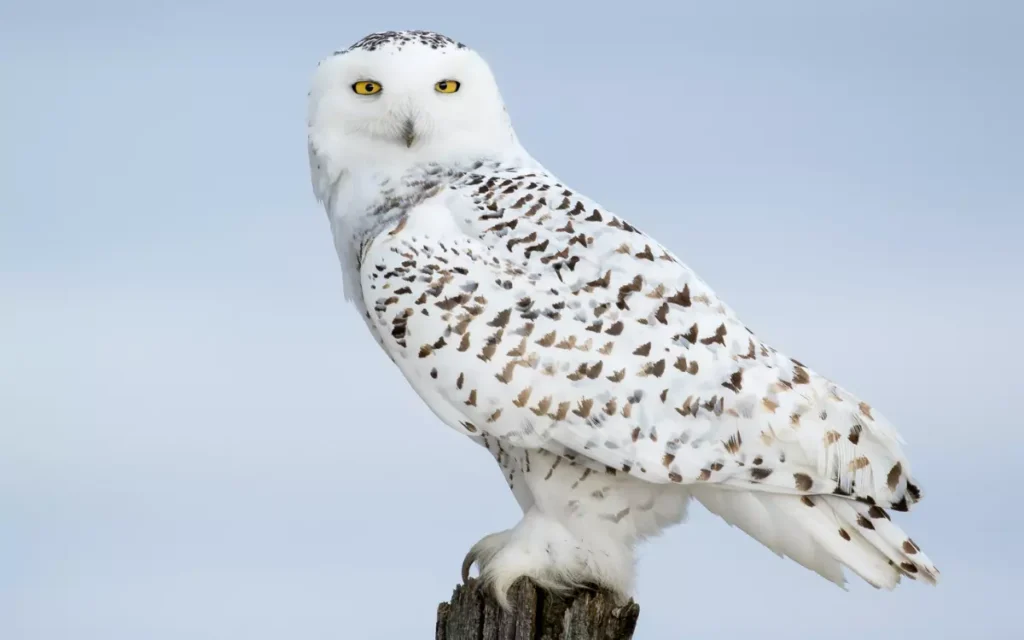
- Kingdom: Animalia
- Class: Aves
- Order: Strigiformes
- Family: Strigidae
- Genus: Bubo
- Species: Bubo scandiacus
The Snowy Owl is known for its striking appearance, with a mostly white body and sparse black markings. These owls are fairly common in Arctic regions but can be seen further south during winter migrations. They nest directly on the ground in open tundra. Their diet includes lemmings, other small rodents, and birds.
Fun fact: Snowy Owls are one of the few owl species that are diurnal, meaning they are active during the day, especially in the Arctic summer’s continuous daylight.
- Length: 20.5-28 in (52-71 cm)
- Weight: 56.4-104.1 oz (1600-2950 g)
- Wingspan: 49.6-65.4 in (126-166 cm)
15.Great Egret – Ardea alba
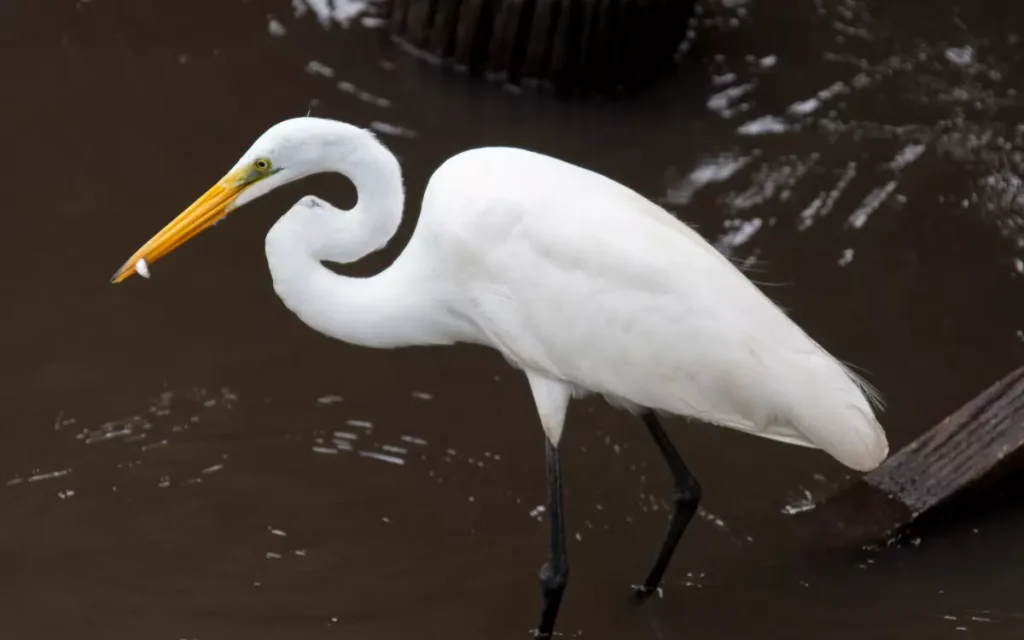
- Kingdom: Animalia
- Class: Aves
- Order: Pelecaniformes
- Family: Ardeidae
- Genus: Ardea
- Species: Ardea alba
The Great Egret is an elegant bird with a sleek white body, long neck, and slender black legs. It is commonly found in wetlands and along coastlines. These egrets build their nests in trees near water from sticks and reeds. They primarily feed on fish, amphibians, and small mammals, which they catch with a swift jab of their long, sharp beak.
Fun fact: The Great Egret was once hunted nearly to extinction for its beautiful long plumes, which were highly sought after for use in women’s hats in the early 20th century.
- Length: 37.0-40.9 in (94-104 cm)
- Weight: 35.3 oz (1000 g)
- Wingspan: 51.6-57.1 in (131-145 cm)
Bird-Watching Tips for Wyoming:
Bird-watching in Wyoming can be an exciting adventure! The best times for bird watching are early in the morning or late in the afternoon when birds are most active. Always bring binoculars, a field guide, and a notepad to record your sightings.
Dress in neutral colors to blend in with the environment. Be quiet and patient to avoid disturbing the wildlife. For those interested in vibrant species, don’t miss the Red, Orange, & Yellow Birds of Wyoming, where you can spot some of the most colorful birds in the state. Remember to respect nature and enjoy the beauty of bird watching!
Some FAQs with short answers:
Q: What is the most common bird in Wyoming?
Ans: The Western Meadowlark, also the state bird of Wyoming, is one of the most common birds in the state.
Q: What is the Wyoming bird called?
Ans: The official state bird of Wyoming is the Western Meadowlark (Sturnella neglecta).
Q: What is the largest bird ever recorded?
Ans: The largest bird ever recorded is the extinct Elephant Bird (Aepyornis maximus), which was native to Madagascar.
Q: What Wyoming birds have long legs?
Ans: Birds with long legs in Wyoming include the Great Blue Heron, Sandhill Crane, and American Avocet.
Q: What is the number 1 largest bird in the world?
Ans: The Ostrich (Struthio camelus) is the largest bird in the world by height and weight.
Q: What is the largest bird alive today?
Ans: The largest bird alive today is the Ostrich, which can weigh up to 290 lbs and stand over 9 feet tall.
Conclusion:
Wyoming is home to some incredible birds. From the towering Bald Eagle to the massive American White Pelican, the 15 largest birds in Wyoming offer a fascinating glimpse into the world of avian giants.

